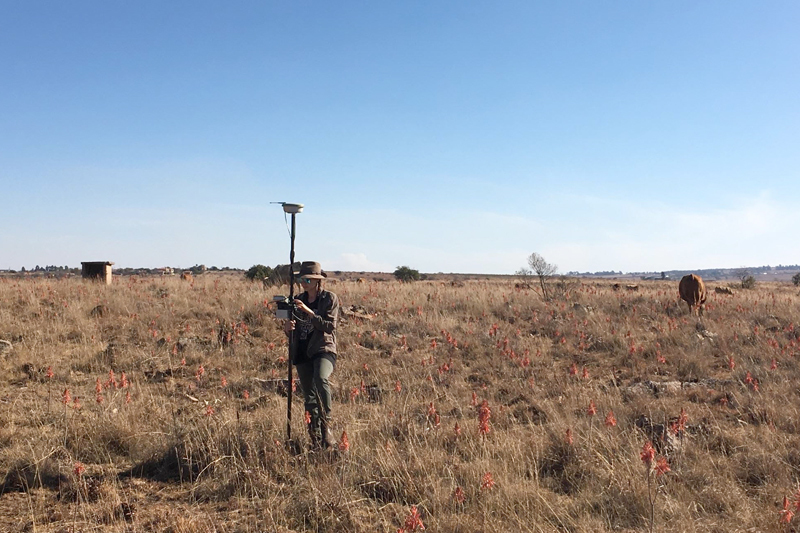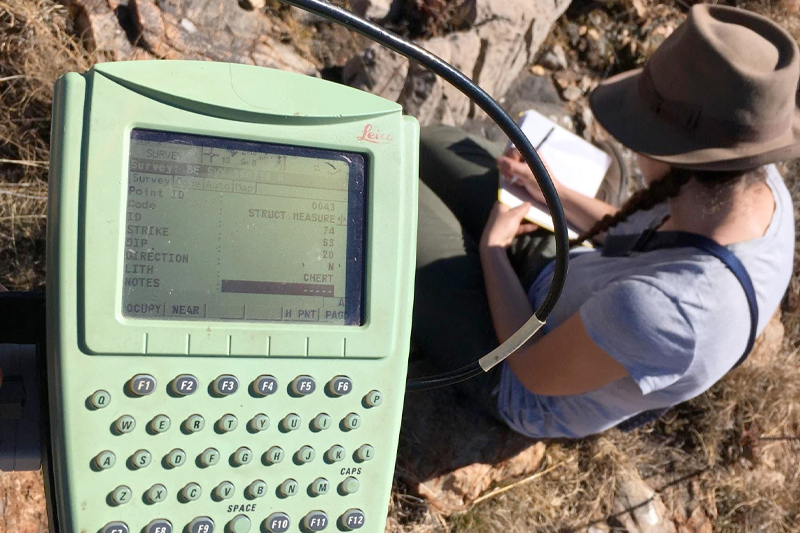Rocking the Cradle: new evidence shows site is much younger than thought
12 May 2023 | Story Supplied. Voice Cwenga Koyana. Read time 7 min.
New evidence shows that South Africa’s Cradle of Humankind site, pegged at 4 million years old, is much younger than was previously thought. This brings the narrative of its antiquity into question.
The finding follows multidisciplinary investigations at Bolt’s Cave at this World Heritage Site, which has been dated to 2.27-1.70 million years old, almost 2 million years younger than previous research had assumed.
This is according to a paper recently published by Dr Tara Edwards, a Human Evolution Research Institute (HERI) postdoctoral research fellow from the Department of Geological Sciences at the University of Cape Town (UCT).
The paper’s title is “Challenging the antiquity of the Cradle of Humankind, South Africa: Geochronological evidence restricts the age of Eurotomys bolti and Parapapio to less than 2.3 Ma at Waypoint 160, Bolt’s Farm”.
The Cradle of Humankind is a paleoanthropological site some 50 km northwest of Johannesburg. It was declared a World Heritage Site by UNESCO in 1999. The site is home to the largest concentration of human ancestral remains anywhere in the world.

The multi-disciplinary findings have important implications for human evolution research in the area, which is home to over 40% of the world’s known hominin fossils.
Lead author Dr Edwards said, “As it stands, all of our work using multi-disciplinary sources over the last few years show no evidence for any sites in the Cradle older than 3.20 million years.”
Specifically, this debunks assumptions that sites like Sterkfontein Caves, renowned for its Australopithecus fossils, preserve deposits and fossils older than this.
Dating cave deposits
The work, published in the prestigious Journal of Human Evolution, uses a multi-disciplinary approach of sediment analysis, palaeomagentism and uranium-lead dating to age the cave deposits between 2.27 and 1.70 million years old, correcting previous work which overestimated the age by around 2 million years.
“Our research applies multiple lines of evidence to reliably dispel the long-held assumption that Bolt’s Farm is a site of great antiquity,” said Edwards.
“This finding helps us more accurately assess the ages of sites within the Cradle, including fossils that directly impact our understanding of human origins.”
“No previous study uses multiple lines of evidence to date Bolt’s Farm, so this research really highlights the importance of multidisciplinary work.”
Bolt’s Farm is a cave system found in the Cradle of Humankind site. It is an important source of fossils, with various species of Plio-Pleistocene fauna, including primates and big cats. It is also home to a novel species of rat, Euryotomys bolti (E. bolti), found nowhere else.
Early research had dated the small cave called Waypoint 160 at Bolt’s Farm at about 4.5 million years, making it far older than other Cradle sites. That work, however, relied on the fossilised remains of the novel E. bolti species and comparing it to other fossil sites in South Africa.
In this new study, Edwards and her team present an analysis of sedimentary rock deposits from within the cave, including uranium-lead dating of flowstones, palaeomagnetic analysis, and facies analysis.
“No previous study uses multiple lines of evidence to date Bolt’s Farm, so this research really highlights the importance of multidisciplinary work for painting a holistic and cohesive picture of the past,” Edwards noted.
Important clues
The findings not only give a more robust date for Bolt’s Farm but make it possible for the first time to compare it with other fossil-bearing deposits within the region. They also redefine the suggested age of the E. bolti species, dating it almost two million years younger than previously assumed.
“We know the Cradle holds important clues about our human evolution and researchers should be invigorated to explore the region more.”
Indeed, the fossil-bearing caves in the Cradle are the richest early hominin sites in the world. They are home to nearly 40% of all known human ancestor fossils, including the famous Australopithecus africanus skull nicknamed “Mrs Ples”.
“We know the Cradle holds important clues about our human evolution and researchers should be invigorated to explore the region more,” said Edwards.
“But as it stands, all of our work using multidisciplinary sources over the last few years show no evidence for any sites in the Cradle older than 3.20 million years ago.”
“It is becoming increasingly unlikely that Sterkfontein is as old as claimed.”
According to HERI co-director, Dr Robyn Pickering, a co-author on the study, this is significant because it debunks assumptions that sites like Sterkfontein Caves, where numerous early hominin remains have been found, preserve deposits and fossils older than this.
“It is becoming increasingly unlikely that Sterkfontein is as old as claimed, and this new study is yet another compelling piece of evidence against the presence of very old caves and fossils in the Cradle,” Pickering said.
 This work is licensed under a Creative Commons Attribution-NoDerivatives 4.0 International License.
This work is licensed under a Creative Commons Attribution-NoDerivatives 4.0 International License.
Please view the republishing articles page for more information.










